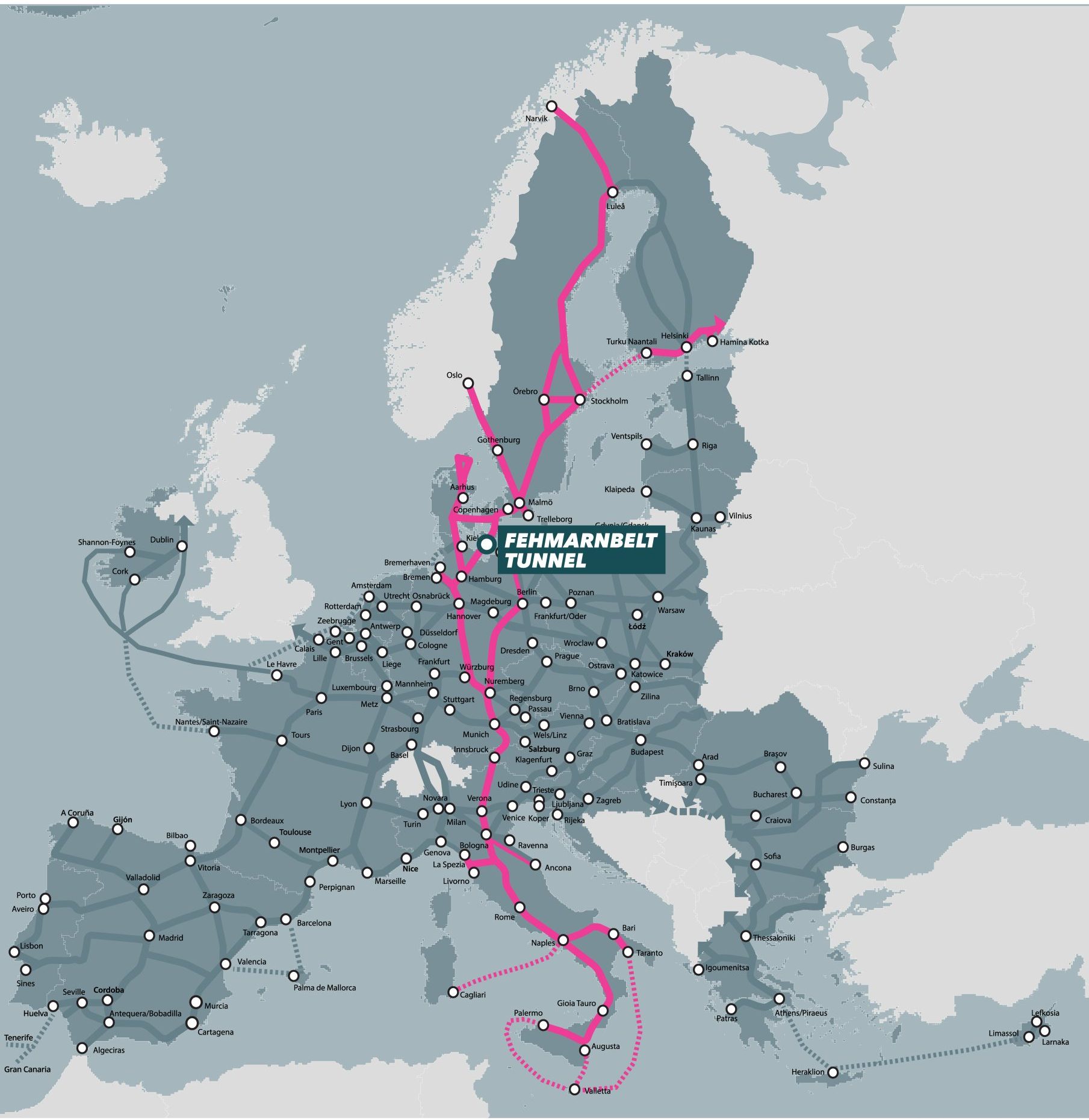Fehmarnbelt tunnel’s rail freight traffic could be delayed until a decade from now

The Fehmarnbelt tunnel is supposed to provide a shortcut to rail freight traffic, alongside road traffic, from Germany into Scandinavia. The grand opening of the tunnel is scheduled for 2029, but it seems that it may not be operational for rail freight until a decade from now. The problem, however, is with an entirely different tunnel.
Rail freight traffic through the Fehmarnbelt tunnel may have to wait up to five years longer than road traffic. According to Danish publication Ekstra Bladet, the Sundtunnel connecting the island of Fehmarn with the German mainland is likely to be delayed significantly.
“It is necessary for train operations that the German railway connection – including a new Fehmarn Sundtunnel – are ready for the opening of the Fehmarnbelt tunnel”, a media spokesperson of Sund & Bælt, the company behind the Fehmarnbelt tunnel, tells RailFreight.com. The Fehmarnbelt tunnel to Denmark is entirely dependent on the Sundtunnel for rail freight operations.

Bridge replacement
The Fehmarnsund bridge, which is currently in use to connect Fehmarn to Germany, is old and too weak to facilitate heavy rail freight traffic. “The existing Fehmarnsund bridge will be preserved as a landmark at the request of the region and the municipalities and is currently being renovated”, Deutsche Bahn (DB) explains to RailFreight.com. Germany decided upon a tunnel as replacement for the bridge in 2020. “The new tunnel will be a 2,2-kilometre long immersed tunnel with four lanes for the road and two tracks for the railroad”, says DB.
“Construction work on the Sundtunnel is scheduled to begin in 2026 and be completed at the same time as the Danish Belt Tunnel goes into operation. The approval documents are expected to be submitted to the Federal Railway Authority at the beginning of next year (2025)”, Deutsche Bahn says. DB’s explanation shows no sign of trouble on the horizon.
Delay until 2035
The Danish Ekstra Bladet, on the other hand, says that memos from Sund & Bælt show that Germany’s schedule is based on the assumption that there will be no delays in approval. But exactly that is the main issue, according to the Danish publication, which claims that environmental approvals and complaints are delaying the project until 2035 at the latest.
While Danish politicians express doubts about the timetable, with the transport ministry calling it “ambitious”, there seems to be little coordination between the two sides on the completion of the project: “The German railway connections to the Fehmarnbelt Tunnel is entirely the responsibility of Germany, and work is carried out by Deutsche Bahn”, Sund & Bælt says. “The work on the German railway connection takes place independently of the construction of the Fehmarnbelt tunnel, which is being built by the Danish state-owned entity Femern A/S. It remains our ambition to complete the project by 2029.”
Reportedly, Germany is now working on a “plan B”, which would include reinforcing the existing bridge. But even then, freight trains would likely be too heavy to cross it. If the Sundtunnel is not completed on time, then a projected 70 daily freight trains will have to take the long way around Denmark.
You just read one of our premium articles free of charge
Want full access? Take advantage of our exclusive offer




